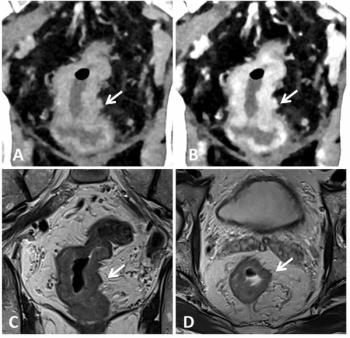
MR Spectography Tracks Brain Response to Analgesic
Brain imaging helps detect effectiveness of pregabalin among patients with fibromyalgia.
Magnetic resonance spectography of the brain may aid clinicians in assessment and potential treatment of chronic pain, according to a study published in the journal
Researchers from the University of Michigan in Ann Arbor undertook a double-blind, two-period, crossover study to evaluate the usefulness of neuroimaging procedures of the brain in determining the clinical action of pregabalin, which has been effective in treating neuropathic pain in many patients.
Twenty-nine patients who experienced chronic pain from fibromyalgia were enrolled into the study, with 17 completing it. The patients, who were randomized to pregabalin or placebo, underwent three neuroimaging procedures: proton MR spectroscopy, functional MRI, and functional connectivity MRI. Previous research has shown that patients with fibromyalgia may have heightened neural activity in a region of the brain involved in processing pain and emotion called the insula. This excess activity may be related to elevated levels of glutamate, an excitatory neurotransmitter.
The researchers assessed treatment response for both evoked experimental pain as well as spontaneous clinical pain. Patients rated their pain levels before and after treatment.
The researchers found reduced combined glutamate plus glutamine levels within the posterior insula among the patients who took pregabalin but not among those who took the placebo. “Interestingly, reductions in clinical pain were associated with reductions in brain connectivity of this structure to brain regions within the default mode network during pregabalin but not placebo,” the authors wrote.
They also found that response of default mode network regions to experimental pain was reduced with pregabalin but not placebo. In addition, baseline values for all three neuroimaging markers predicted subsequent analgesic response to pregabalin but not placebo.
“The significance of this study is that it demonstrates that pharmacologic therapies for chronic pain can be studied with brain imaging,” lead study author Richard Harris, PhD, said in a release. Harris is an assistant professor of anesthesiology at the University of Michigan. “The results could point to a future in which more targeted brain imaging approaches can be used during pharmacological treatment of widespread pain, rather than the current trial-and-error approach.”
Newsletter
Stay at the forefront of radiology with the Diagnostic Imaging newsletter, delivering the latest news, clinical insights, and imaging advancements for today’s radiologists.



























